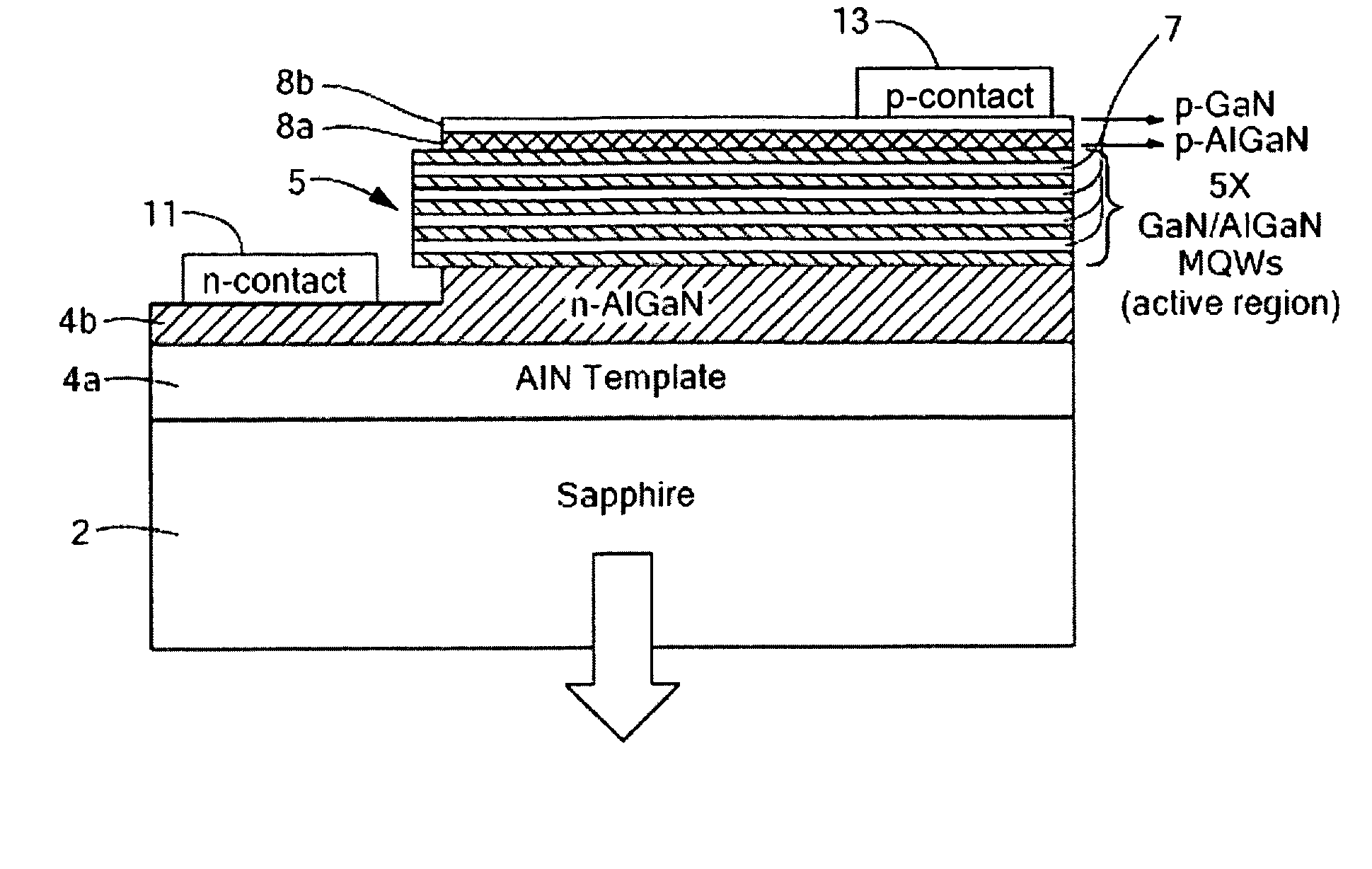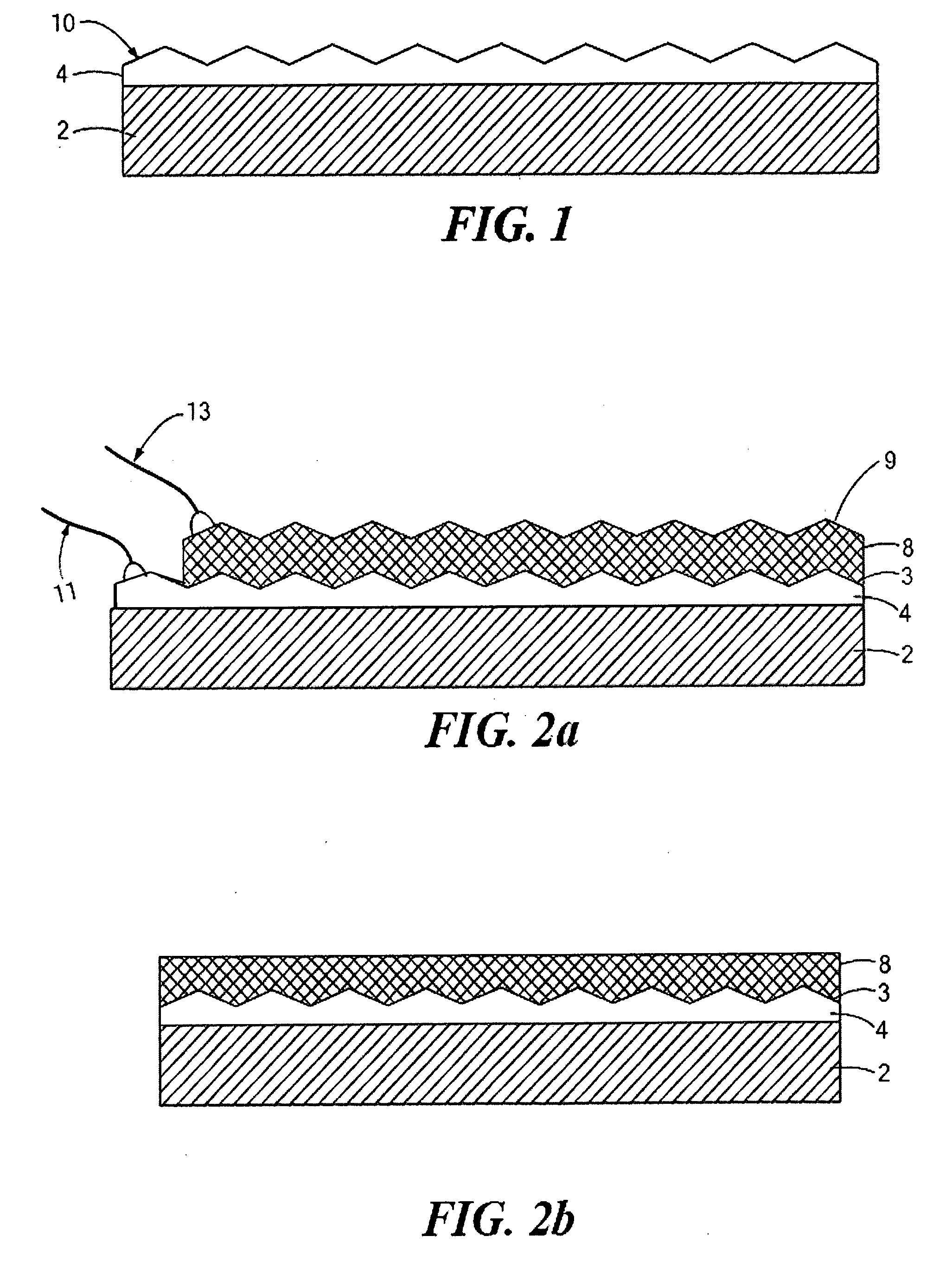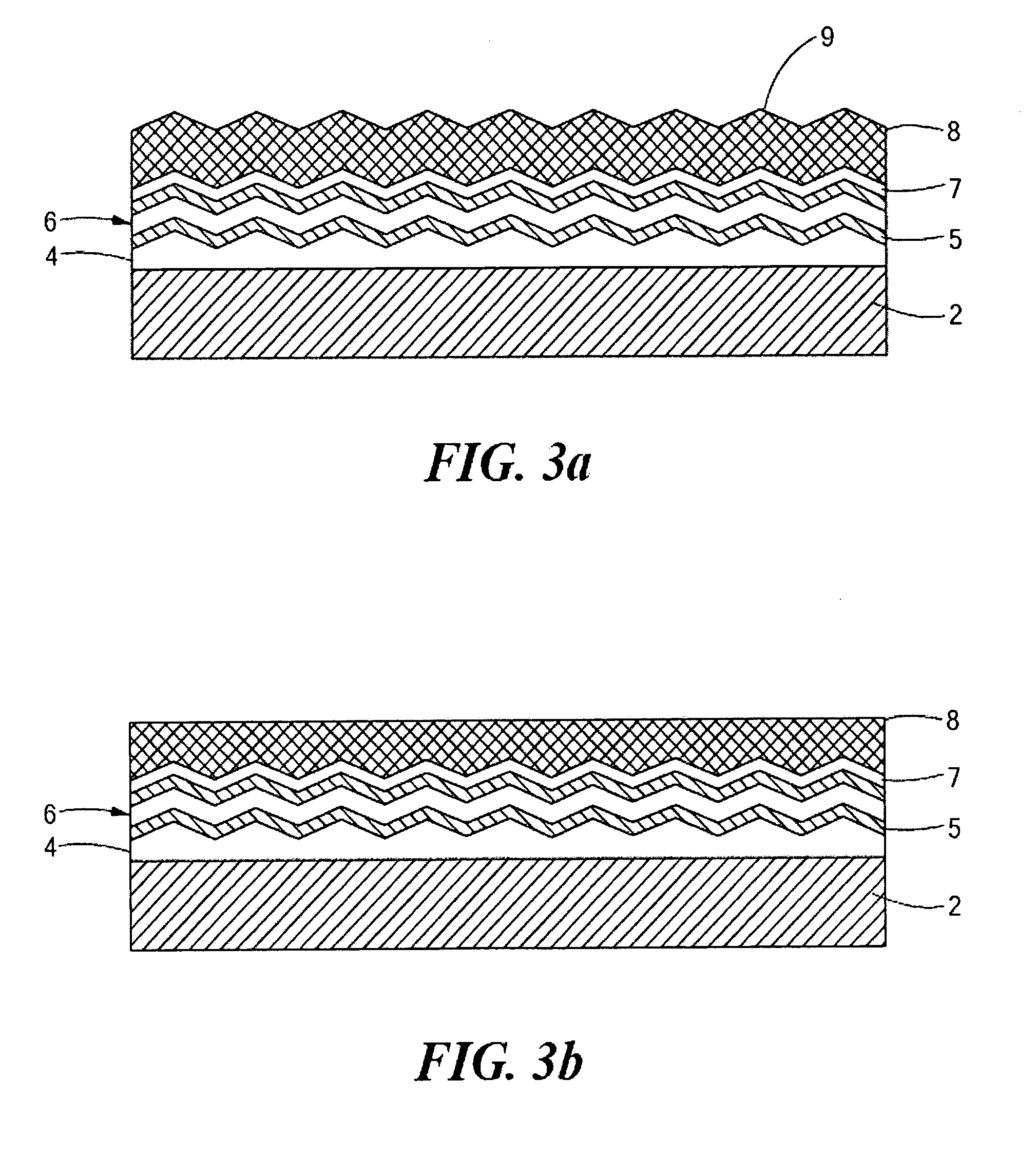Optical devices featuring textured semiconductor layers
a technology of optical devices and semiconductor layers, applied in the direction of semiconductor devices, electrical devices, nanotechnology, etc., can solve the problems of slow index-material degradation, low efficiency of internal efficiency, and some manufacturing limitations, so as to improve the efficiency of light extraction and coupling light into the device, and enhance light escape
- Summary
- Abstract
- Description
- Claims
- Application Information
AI Technical Summary
Benefits of technology
Problems solved by technology
Method used
Image
Examples
example i
Growth of Textured GaN Templates by HVPE
[0129] Textured GaN templates were fabricated by the modified HVPE process described above. FIG. 7 shows an electrically excited wafer level LED radiating at p contact 20. This blue LED structure was made on an unpolished (0001) sapphire substrate. On this substrate was grown 3 microns of heavily doped n-type GaN, followed by 10 MQWs consisting of InGaN with 13% indium as the wells and GaN as the barriers. The growth of the MQWs is followed by a thin (about 10 nm) electron blocking layer consisting of AlGaN with 30% Al doped p-type with magnesium, and this is followed by 200 nm of heavily p-type doped GaN with magnesium. The free surface from where the light is emitted has replicated the morphology of the unpolished sapphire substrate.
[0130]FIG. 8a shows a scanning electron microscope (SEM) image of a GaN template randomly textured as grown via the modified HVPE process. The image was captured with the sample tilted about thirty degrees with...
example ii
Growth of Multiple Wrinkled Quantum Wells on a Textured Template
[0134]FIG. 6 is a transmission electron microscope image showing multiple quantum wells on a textured surface (wrinkled quantum wells). The quantum wells comprise ten pairs of AlGaN and GaN layers. An individual GaN layer may comprise a textured quantum well layer with the AlGaN layer serving as the barrier layer. The composition of the AlGaN layer, for example, is Al0.2Ga0.8N. Generally, that is AlxGa1-xN. The multiple quantum wells can also be made by any combination of small gap III-V nitride films (wells) and large gap III-V nitride films (barriers). The composition of the MQW determines the emission energy of light from about 0.7 eV of pure InN to 6 eV from pure AlN. The plurality of quantum well layers are grown by any suitable deposition process. A MBE process involves the reaction of a group III material with nitrogen that has been activated by radio frequency or microwave plasma. An alternative approach would ...
example iii
Textured Surface Made by Etching of a Masked Template
[0141] In this example, a textured substrate is created with a textured surface on which additional layers are grown, while replicating the textured features. The additional layers may be grown so as to form a textured template, a p-n junction or an optical device of the invention. The additional layer(s) may also comprise multiple quantum wells formed by a plurality of well and barrier layers. The surface of the substrate to be textured may be smooth or previously textured. The surface of the substrate can also be unaltered or otherwise natural.
[0142] A mask structure comprising a monolayer of monodisperse spherical colloidal particles is coated onto the surface of the substrate. The substrate can include silicon, silicon carbide, sapphire, gallium arsenide, gallium nitride, aluminum nitride, zinc oxide, or glass. Spherical monodisperse colloidal particles can be commercially obtained in sizes ranging from 0.02 to 10 microns. T...
PUM
 Login to View More
Login to View More Abstract
Description
Claims
Application Information
 Login to View More
Login to View More - R&D
- Intellectual Property
- Life Sciences
- Materials
- Tech Scout
- Unparalleled Data Quality
- Higher Quality Content
- 60% Fewer Hallucinations
Browse by: Latest US Patents, China's latest patents, Technical Efficacy Thesaurus, Application Domain, Technology Topic, Popular Technical Reports.
© 2025 PatSnap. All rights reserved.Legal|Privacy policy|Modern Slavery Act Transparency Statement|Sitemap|About US| Contact US: help@patsnap.com



